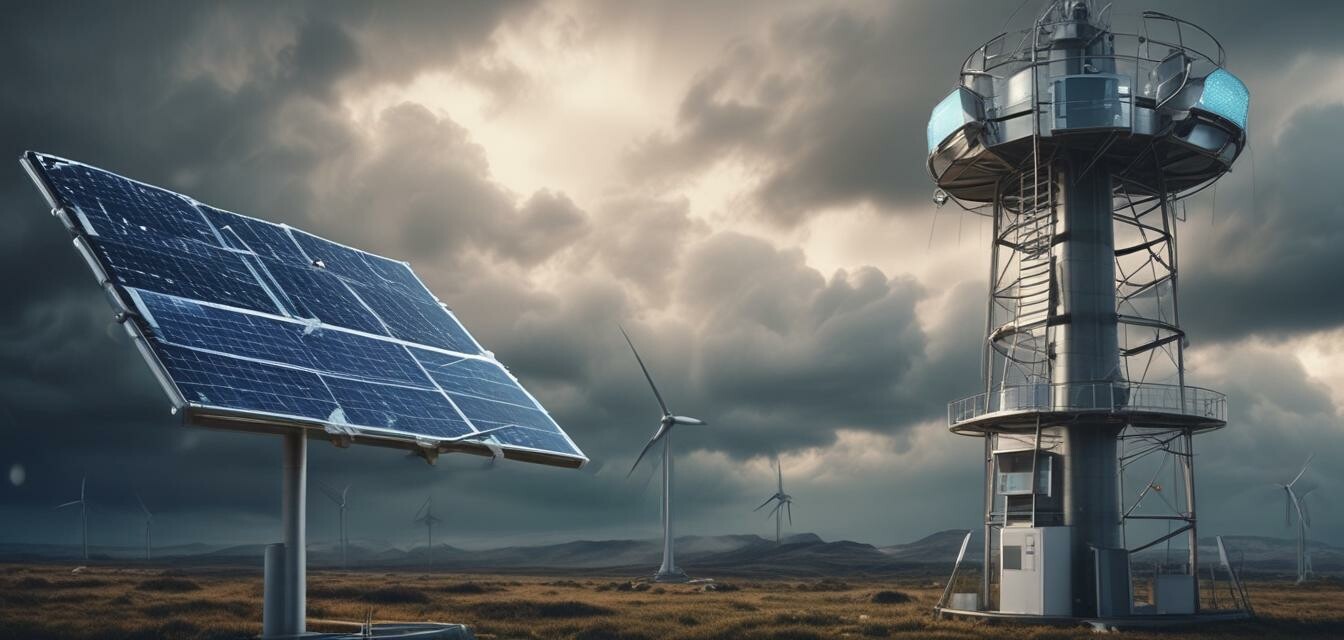
Impact of Climate Change on Weather Station Technology
Key Takeaways
- Climate change is leading to rapid advancements in weather station technology.
- Innovative data collection methods are enhancing accuracy in atmospheric monitoring.
- Consumers are increasingly looking for IoT-enabled devices for real-time data.
- New features like solar power and remote sensors are becoming standard.
- Weather station technology is adapting to meet the challenges posed by climate variability.
The impact of climate change is reshaping our understanding of weather patterns and systems. As a result, weather station technology is rapidly evolving to address the demands of climate monitoring and data collection. In this article, we'll explore how climate change is influencing these advancements and what this means for weather enthusiasts and researchers alike.
Understanding climate change and its effects
Climate change refers to long-term shifts in temperatures and weather patterns, primarily caused by human activities. The most significant influence on climate is the increase of greenhouse gases in the atmosphere, which leads to rising global temperatures, severe weather events, and unpredictable climate conditions. Hence, monitoring these parameters accurately is essential.
Adapting technology to meet new challenges
With the urgency of addressing climate change, weather station technology has made remarkable progress. Below are some advancements driven by the need for precise data:
- Data Integration: The integration of real-time weather data with cities' IoT systems enhances predictive analytics and decision-making.
- Remote Sensing: Enhanced sensors measure various atmospheric parameters such as temperature, humidity, and air quality remotely.
- AI and Machine Learning: These technologies provide more efficient data analysis, improving forecasting methods dramatically.
Innovative features in modern weather stations
The latest weather stations are designed to tackle climate variability effectively. Here are some notable features that reflect this trend:
| Feature | Description |
|---|---|
| Solar Power | Many stations now come with solar panels, allowing for sustainable and efficient energy use. |
| Smart Technology | Devices are increasingly IoT-enabled, permitting integration with smartphones and home automation systems. |
| High-precision Sensors | Improved sensors provide more accurate measurements of atmospheric conditions. |
| Weather Alerts | Real-time alerts can notify users about severe weather conditions, enabling timely responses. |
| Data Sharing | Weather stations now enable users to share their data with global databases, contributing to broader climate research efforts. |
The role of data collection in climate monitoring
Advancements in data collection have made it possible to gather information from a wide range of sources. Here’s how weather station technology contributes:
- Allows monitoring of localized weather phenomena.
- Feeds data into central databases used by governments and agencies for climate research.
- Provides valuable insights for agricultural sectors, enhancing crop management schedules.
Consumer demand for enhanced features
The push for more effective weather monitoring technologies comes from consumers and researchers alike. Here's what they are looking for:
Pros
- Real-time updates on weather conditions.
- Increased awareness of severe weather threats.
- Convenient data access through mobile applications.
- Sustainability through the use of renewable energy sources.
- Contribution to broader climate change research.
Cons
- Higher costs for advanced technology.
- Potential data privacy concerns when sharing data.
- Complexity of devices may overwhelm non-tech-savvy users.
Emerging trends in smart weather stations
In light of climate change, several trends have emerged within the industry:
- Increased connectivity: More devices are equipped with Wi-Fi and Bluetooth functionalities for improved data transfer.
- Multi-functionality: New models aim to tackle multiple aspects of weather monitoring, from temperature to UV levels.
- Enhanced durability: Weather stations are being designed to withstand extreme weather conditions.
- Data visualization tools: Modern applications provide intuitive graphs and forecasts based on collected data.
Looking towards the future
The next few years will be pivotal for weather station technology as the world continues to grapple with climate change. Innovations are expected to keep unveiling new capabilities, pushing manufacturers to ensure their devices aren't just functional but also essential for combating climate-related challenges.
To stay updated on the latest in weather station technology, check our blog section on news and trends or explore our extensive product line.
Tips for choosing a weather station
- Assess your specific monitoring needs: Consider what atmospheric data is most relevant for you.
- Check compatibility with smart home systems: Ensure your new device integrates seamlessly with your existing tech.
- Look for user-friendly interfaces: Easier navigation will enhance your overall experience.
- Consider additional features: Features like remote alerts can provide significant advantages during severe weather.
Weather station technology is at the forefront of climate monitoring advancements. With increasing consumer interest, it is essential to adapt to the ongoing changes in our environment. By staying informed and investing in innovative technology, we can better understand and respond to the challenges posed by climate change.